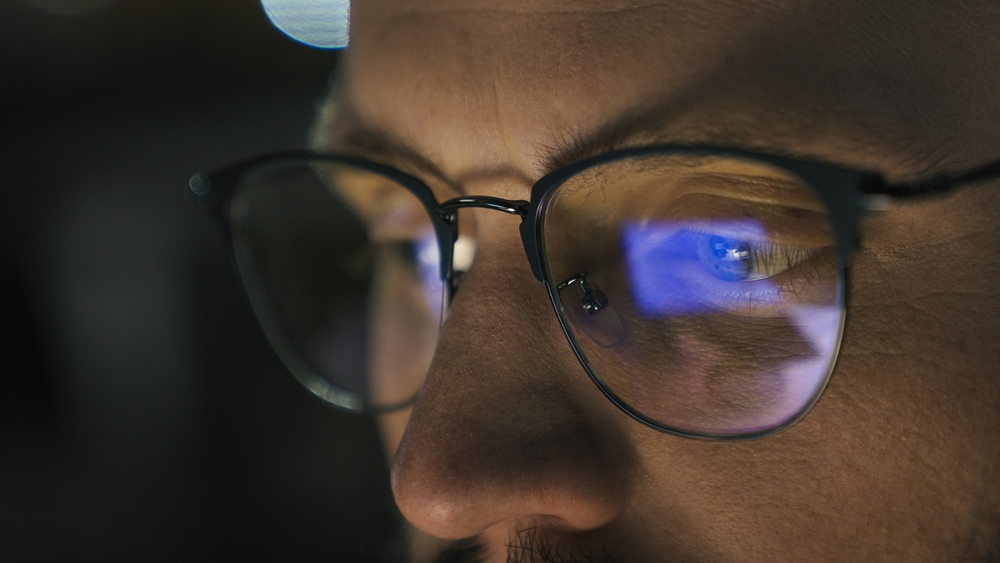
As the boundaries between work and home continue to blur, more people are experiencing the unique challenges of a hybrid or fully remote work environment. While the flexibility of working from multiple locations offers many advantages, it also brings an unexpected downside: increased screen time, leading to digital eye strain.
The Hybrid Work Revolution and Its Impact on Your Eyes
Hybrid and remote work models have quickly become the norm for many professionals. With video meetings, emails, and digital collaboration tools, our eyes are often glued to screens for much longer stretches than before. Whether you’re working from your office, home, or a local coffee shop, the cumulative hours spent in front of digital devices can take a toll on your vision and overall eye comfort.
What Is Digital Eye Strain?
Digital eye strain, also known as computer vision syndrome, is a group of eye and vision-related problems that arise from prolonged use of digital devices such as computers, tablets, e-readers, and smartphones. People experiencing digital eye strain may notice symptoms like dry, irritated, or red eyes, blurred or double vision, frequent headaches, neck and shoulder pain, and difficulty focusing. These symptoms can become more pronounced the longer you spend in front of screens, making digital eye strain a common issue for those working in hybrid or remote environments.
What Causes Digital Eye Strain?
There are several factors that can contribute to digital eye strain, especially in a hybrid work setting. Extended screen time, with fewer natural breaks and longer periods of focused work, often results in less frequent blinking and increased eye discomfort. Poor lighting conditions, such as harsh overhead lights or glare from windows, can also exacerbate symptoms. Additionally, sitting too close to or too far from your screen can strain your eyes, as can working with undiagnosed or uncorrected vision problems. All these elements combined can make the modern hybrid workplace a challenging environment for eye health.
What You Can Do to Relieve Digital Eye Strain
The good news is that making a few simple adjustments to your work-from-home routine can help prevent or reduce the symptoms of digital eye strain.
• Follow the 20-20-20 Rule: Every 20 minutes, take a 20-second break and look at something 20 feet away.
• Optimize Your Workspace: Position your screen about an arm’s length away and slightly below eye level. Adjust your chair and lighting to reduce glare.
• Adjust Your Devices: Increase text size, adjust brightness and contrast, and use blue light filters if needed.
• Use Artificial Tears: Over-the-counter lubricating drops can relieve dryness caused by less frequent blinking.
When to See Your Optometrist
If you’re experiencing persistent eye discomfort, blurred vision, or headaches (even after making adjustments) it may be time to schedule an eye exam. Your optometrist can check for underlying vision problems, recommend computer glasses, and provide personalized advice for your specific needs. Regular eye exams are crucial, especially if your work habits have changed and your screen time has increased.
Don’t Let Eye Strain Slow You Down
Digital eye strain has become an all-too-common side effect of today’s hybrid and remote work culture. By understanding the causes and taking proactive steps to protect your eyes, you can stay comfortable and productive - no matter where your work takes you.
If you’re struggling with digital eye strain, schedule a comprehensive eye exam with Patel Vision Group for personalized treatment. Visit our office in Visalia, Redding, Roseville, Monterey, Salinas, Sacramento, Fresno, or Fair Oaks, California. Call (559) 739-8550, (530) 221-6557, (916) 788-2960, (831) 375-7755, (831) 443-5250, (916) 629-8033, (559) 538-1567, (916) 966-4700, or (559) 500-7685 to book your appointment today.








